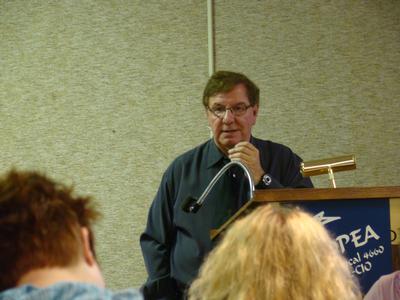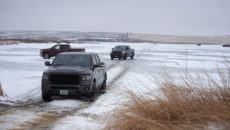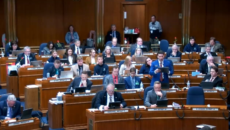Dorso Column: Holmberg Selection For Leadership Widens Legislative Divides

Lloyd Omdahl’s recent column about the selection of Grand Forks Republican Sen. Ray Holmberg as chairman of Legislative Managementmade me stop and think. Omdahl’s contention is that a moderation of the political discourse because of Holmberg’s election will make for a better political atmosphere. I am not convinced that is the case. A better case could be made for the widening of the divide between the ND House and Senate.
The former Lt. Governor gives quite a list of names he believed to be moderates. It is interesting that most of them served in the North Dakota Senate. I must assume that he believes the ND House is mainly composed of ideologues that are not as capable of compromise as is his beloved Senate.
I come from a different perspective as the former Majority Leader of the North Dakota House of Representatives. I also served in my leadership role in the decade after Omdahl left office. I knew and served with most of the men he mentions in the column. While I respect their service I certainly don’t think they were great problem solvers.
Rather than critique each one of their careers let me recall for the reader where we were in the decade of the 80’s when most of these men were still active. North Dakotans were outraged that some scholars from the east were suggesting that the state should be returned to what they called the “Buffalo Commons”. The outflow of population, especially the young and talented was of grave concern. The state’s fiscal picture was dire with little growth in the state’s economy. The unemployment compensation fund was a 100 million in the red and borrowing from the federal government. Workers compensation was in even more actuarial trouble.
Under Governor Sinner, Lt. Governor Omdahl and a Democrat controlled ND Senate an increase in Gas Tax, Income Tax and Sales Tax was passed to make up for the shortfall of revenue versus spending. The Republican House tried to hold back spending trying to avoid the need for tax increases. We were not successful as Republican Senators such as Senator Lips joined with the Democrats in pushing through the spending. In the end a referral of the tax increases was successful forcing Governor Sinner to make the spending cuts the house had advocated.
While this was going on the Greater North Dakota Association (state chamber of commerce) was holding meetings all around the state trying to figure out how to get the state’s economy back on track. What I can remember of that exercise was a call for more general fund spending and a more lenient loan program at the Bank of North Dakota. (Sounds a lot like the Obama administration and the US Senate.) All of that was raped up in a package called “Growing North Dakota”.
Meanwhile over in House we were putting a package of real reforms in place. Repeal of the Sunday opening laws was considered key but was opposed by most senators in session after session as the record will make clear. Getting rid of North Dakota’s restrictive banking laws was also fought by the senate. Reforms of unemployment comp and work comp were also battles that were stymied in the senate. Almost all of the strategic initiatives were gained in fits and starts because the senate could only be brought along incrementally.
From my perspective Mr. Omdahl’s definition of moderates is those who are happy with the status quo. It is quite easy to get along if you go along. It is when the heavy lifting requiring change has to addressed that real statesman rise to the challenge.
A review of the record of past legislative sessions will show that the North Dakota Senate has for the most part, been resistant to change. That was quite apparent in this last session as the house and senate struggled over the major funding and tax issues.
What Omdahl does not point out is that the Senate resistance to the House’s legislative initiatives caused the Senate to seek an unholy alliance with house Democrats. The result was an election of Senator Holmberg who the Senators and House Democrats perceive as more ideologically in tune with their agendas. In reality the change probably means very little as once the Legislative Council chooses its studies and puts the interim committees together the power of the Chairman isn’t of that much note. The message one must come away with is that a more moderate Senate Republican caucus wasn’t happy with Majority Leader Carlson and his cadre of conservatives in the house.
All of the above leads me to one conclusion. I think it is time for some real strategic thinking by political leaders in North Dakota. The state’s financial circumstances have turned 180 degrees since the start of the 1990’s. That does not mean that maintaining the status quo because of the economic boon is appropriate. Programs such as the K-12 funding formula, maintaince of the Higher Education system as it is, property tax relief as it is presently structured and other programs need a critical review.
It was always my contention that a legislative session shouldn’t be judged by its reaction to whatever was the hot button issue of the time. The most important measure is what direction has the legislature set for the state over the next 7 or 8 years.







